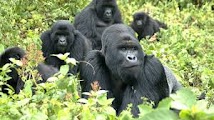With 10
national parks, Uganda is undoubtedly one of the excellent African destinations
with diverse attractions for you to explore while you are on safari in Africa.
However, not all these national parks are visited frequently and that why you
need to be aware which ones are feature on the top list and why is it so?
Murchison Falls National Park
This
park was first gazetted around 1926 and it covers an area of over 3840 square
kilometers making it not just Uganda’s largest savanna grassland national park
but one of the oldest parks. It first gained its status as a national park in
1952 and it is located northwest of Uganda just along the northern edge of the
Albertine Rift Valley. The park mainly characterized by spectacular savanna and
borassus palms, acacia trees and riverine woodland that thrives mainly in the
northern part and the woodland and forest patches in the south. It boasts of
its over 76 mammal species, 451 bird species and it is divided by the Victoria
Nile where the Mighty Murchison Falls squeezes itself in a 8 meter narrow gorge
with a powerful roar into the devil’s cauldron that makes up a permanent
rainbow. The park is popular for big game especially elephants, lions,
leopards, buffaloes as well as other wildlife species like hippos, giraffes,
warthogs, baboons, chimpanzees, the Nile crocodiles and both resident and
migratory bird species. It is mainly visited for birding, game drives, boat
cruise and many other exciting activities.
 |
Murchison Falls
|
Queen Elizabeth National Park
Best
described as a medley of wonders for many reasons! Queen Elizabeth National
Park covers an area of about 1978 square kilometers and it was established
around 1952 as Kazinga National Park but later, it was renamed after 2 years in
remembrance of Queen Elizabeth the second after her visit at the park. This
park offers refuge to more than 95 species of mammals, 620 bird species and the
Katwe explosion craters feature as the highest points of the park and stand at
altitude 1350 meters and the lowest point at altitude 910 and it is at Lake
Edward. It is Uganda’s second largest national park after Murchison Falls
National Park and mostly famous for its diverse ecosystem that comprise of
spectacular savanna, humid forests, wetlands that make it a significant habitat
for exceptional big game, 10 species of primates which include chimpanzees and
more than 620 avian species. It lies at the backdrop of the rugged Rwenzori
Mountain ranges and because of its strategic location; the park is undeniably one
of the most spectacular natural wonders Uganda has in offer for the world.
Besides wildlife, there are also several rolling green hills that offer
breathtaking views of the Kazinga channel and its banks that come with hippos,
elephants, buffaloes as well as endless Ishasha plains that feature fig trees
where tree climbing lions usually hide. The park is situated in western Uganda
and the leading safari activities for you to enjoy include chimpanzee trekking,
game drive through Kasenyi trail, launch cruise along the Kazinga channel, bird
watching and others.


Kidepo Valley National Park
Kidepo
Valley National Park is situated in the semi arid valleys along the Karamoja
area northeastern Uganda approximately 700 kilometers away from Kampala which
makes it the most isolated protected areas. Despite its isolation, the park still
features as one of the most explored national park. It covers an area of about
1442 square kilometers and it was gazetted around 1962. It is a home to more
than 75 mammal species, 470 bird species which make it one of Africa’s most
exceptional national parks.
Bwindi Impenetrable Forest National Park
If you
are interested in tracking the rare mountain gorillas then Bwindi Impenetrable
Forest National Park shouldn’t miss out in your travel plan. The park is
situated in the southwestern side of Uganda and famous for its over 400
mountain gorillas which represent about half of all those that still exist in
the world today. Besides, there are more than 350 bird species for you to spot
in addition to mountain gorilla tracking. The park also features several
accommodation facilities and visitors on Uganda safari have wide range of
options to choose the best lodge for a night stay. The other alternative is
Mgahinga National Park which features only one habituated gorilla family. Permits
for gorilla trekking in Uganda cost $600 per visitor.
 |
| Mountain gorillas at Bwindi |
Kibale Forest National Park
This
park lies in western Uganda and comprises of 70 mammal species, 13 primate
species with over 1500 chimpanzees which makes it one of the excellent
destination in African continent where chimpanzees thrive from and where you
can track them while in their natural habitat. Other primates for you to look
out at this park include blue monkeys, olive baboons, grey cheeked mangabeys,
pottos, bush baby, black and white colobus monkeys and many more. Chimpanzee
tracking is however a major safari highlight at this park but you can also
incorporate it with bird watching where you will have a chance to sight bird
species like the blue headed sunbird, black capped apalis, little greenbul,
dusky crimson wing, red faced woodland warbler, blue breasted kingfisher, green
breasted pitta, yellow spotted nicator black eared ground thrush, yellow rumped
tinker bird and others.
 |
| Chimpanzees |
In
conclusion, if you are planning to have your next trip in Uganda, then the
above listed national parks shouldn’t miss out in your travel plan. However,
you can also combine your safaris in these parks with other national parks like
Lake Mburo National Park, Mount Elgon National Park, Rwenzori Mountain National
Park, Semuliki Valley National Park and Mgahinga Gorilla National Park.









